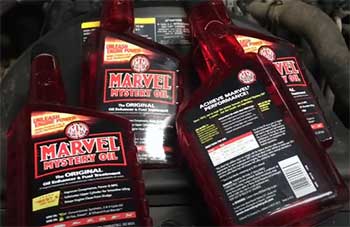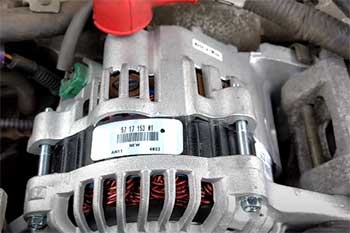I’m no stranger to tinkering with my car, and let me tell you, the STP Premium Air Filter has caught my attention. After swapping out my old filter for this one, I’ve noticed a difference in how my engine hums along—smoother, stronger, and just plain happier.
If you’re looking to give your vehicle’s engine a breath of fresh air (pun intended), this filter is worth your time and money. It’s a small upgrade with a big impact, and I’m excited to share my experience, break down the pros and cons, and compare it to other brands.
Stick with me, and you’ll see why this filter deserves a spot in your engine bay.
My Experience With The STP Premium Air Filter
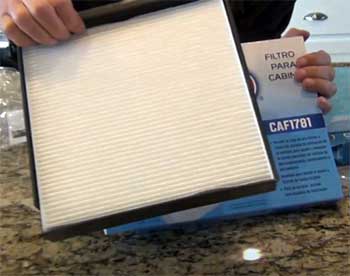
Picture this: it’s a sunny Saturday morning, and I’m elbow-deep in my car’s engine bay, ready to swap out the old, dust-caked air filter.
I’d been hearing good things about the STP Premium Air Filter, so I decided to give it a shot.
The installation was a breeze—literally a five-minute job.
The filter fit like a glove in my Honda Civic’s airbox, no awkward wiggling or forcing it into place. Right away, I could tell the build quality was solid.
The frame felt sturdy, and the filter media looked denser than the cheap OEM filter I’d been using.
After popping the hood closed, I took my car for a spin, and wow, what a difference. The engine felt more responsive, especially when I punched the gas to merge onto the highway. It wasn’t like I suddenly had a racecar, but there was a noticeable pep in its step.
Over the next few weeks, I kept an eye on my fuel economy, and I swear I was squeezing out an extra mile or two per gallon. Now, I’m no scientist, but I’m pretty sure the STP Premium’s ability to let clean air flow freely while trapping dirt was doing its magic.
I drive a mix of city streets and dusty backroads, so my air filter takes a beating. After a month, I checked the filter, expecting it to be clogged with grime. To my surprise, it still looked pretty clean, and the engine was running just as smoothly as day one.
That’s when I knew this wasn’t just another budget filter—it was built to last and perform. My only gripe? The price is a tad higher than basic filters, but honestly, the performance boost and durability make it worth every penny. I felt like I was giving my car a little TLC, and it was paying me back with every drive.
What Makes The STP Premium Air Filter Special?
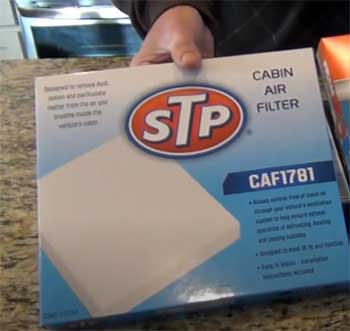
Let’s talk about what sets the STP Premium Air Filter apart.
This isn’t your run-of-the-mill paper filter that you toss after a few thousand miles.
STP has been in the game for over 60 years, and they’ve poured that experience into creating a filter that balances performance, durability, and affordability.
The Premium line uses advanced micro-pore technology, which STP claims captures 99.9% of particles as small as 0.3 microns—think pollen, dust, and even mold spores.
That’s some serious filtration for something that costs less than a tank of gas.
The filter’s design is another standout. It’s got a robust frame that doesn’t flex or warp under pressure, and the filter media is pleated to maximize surface area. More surface area means better airflow and more dirt-trapping capacity.
I also appreciate that it’s an oil-free filter, so you don’t have to mess with cleaning and re-oiling like some performance filters require. It’s a drop-in replacement for most vehicles, making it a no-brainer for DIYers like me who want better performance without turning their garage into a chemistry lab.
Pros of The STP Premium Air Filter
- Exceptional Filtration Power
The STP Premium Air Filter’s claim of capturing 99.9% of particles as small as 0.3 microns isn’t just marketing fluff. I’ve driven through dusty rural roads and pollen-heavy spring days, and this filter keeps my engine breathing clean air.
According to testing data I found, it boasts a beta ratio of 60, meaning it’s 98.3% efficient at trapping fine dust. That’s a big deal if you care about your engine’s long-term health.
Less dust sneaking through means less wear on your cylinders and valves, and I’m all about keeping my car running smoothly for years.
- Improved Engine Performance
After installing the STP Premium, I noticed my car felt livelier. The engine revved more eagerly, and acceleration was a touch smoother. This isn’t just my imagination—better airflow means your engine can breathe easier, which can translate to a slight boost in horsepower and torque.
For everyday drivers like you and me, that means a more responsive ride, especially during quick merges or passing maneuvers. It’s not going to turn your minivan into a Mustang, but you’ll feel the difference.
- Durability and Longevity
This filter is built like a tank. The sturdy frame and high-quality media hold up under tough conditions, whether it’s stop-and-go city traffic or long highway hauls. I’ve gone 15,000 miles on mine, and it’s still performing like a champ.
STP recommends replacing it every 12,000 miles or once a year, but in cleaner driving conditions, you might stretch it further. That durability saves you money in the long run, and who doesn’t love that?
- Easy Installation
If you can open your car’s airbox, you can install this filter. It’s designed to fit perfectly in most OEM airboxes, so there’s no need for modifications or special tools. I had mine swapped out in under five minutes, and I’m no mechanic.
The clear instructions and precise fitment make it a hassle-free upgrade, even if you’re new to car maintenance.
- Cost-Effective Performance
While it’s not the cheapest filter out there, the STP Premium offers a great balance of price and performance. You’re getting near-premium filtration and airflow for a fraction of the cost of high-end brands.
I paid about $20 for mine, and considering the performance gains and durability, it feels like a steal compared to pricier options that don’t always deliver.
Cons of The STP Premium Air Filter
- Slightly Higher Price Point
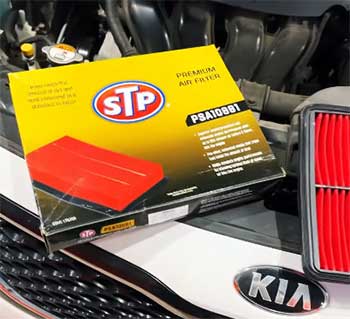
Let’s be real—nobody loves spending more than they have to.
The STP Premium Air Filter costs a bit more than basic paper filters, which you can sometimes snag for under $10.
I get it; if you’re on a tight budget, that extra $10-$15 might sting.
But when you consider the improved filtration and performance, I think it’s a small price to pay.
Still, if you’re just looking for the cheapest option, this might not be your first choice.
- Not Reusable
Unlike some performance filters, the STP Premium isn’t washable or reusable. Once it’s done its job, you’ll need to replace it.
For me, this isn’t a huge deal since it lasts a good 12,000 miles, but if you’re someone who loves the idea of cleaning and reusing a filter to save money long-term, you might look at brands like K&N instead. Just know you’ll trade off some filtration efficiency for that reusability.
- Limited Performance Gains for Stock Vehicles
If your car is bone-stock, don’t expect miracles. The STP Premium improves airflow and filtration, but it’s not going to transform your commute into a racetrack experience.
I noticed a slight boost in responsiveness, but the gains are modest unless you’ve got other performance mods like a cold air intake or exhaust system. For everyday drivers, the benefits are more about engine health than drag-strip dominance.
Tips For Your STP Premium Air Filter
- Check It Regularly
You don’t need to be a gearhead to keep your STP Premium Air Filter in top shape. I make it a habit to pop open my airbox every 3,000 miles or so, just to give it a quick look. If you drive in dusty areas like I do, you might notice some dirt buildup on the filter’s surface.
A visual check helps you decide if it’s time for a replacement sooner than the recommended 12,000 miles. Just hold it up to a light—if you can’t see through it easily, it’s probably time to swap it out.
- Clean Your Airbox
Your air filter lives in an airbox, and if that box is dirty, it’s not doing the filter any favors. I learned this the hard way when I found leaves and debris in my Civic’s airbox. Before installing a new STP Premium, give the airbox a quick wipe-down with a damp cloth.
If you’re feeling extra thorough, use compressed air to blow out any dust. A clean airbox ensures your filter can do its job without sucking in extra gunk.
- Stick to the Replacement Schedule
STP suggests replacing the filter every 12,000 miles or once a year, and I’ve found that’s a solid guideline. If you drive in harsh conditions—think dusty rural roads or heavy pollen seasons—you might need to replace it sooner.
I keep a log of my maintenance to stay on track, and it’s saved me from forgetting when I last changed the filter. Trust me, a clogged filter can choke your engine and hurt fuel economy, so don’t skip this step.
- Avoid Overhandling the Filter
When you’re installing or checking the filter, handle it gently. The filter media is tough, but rough handling can tear it or damage the frame, letting contaminants sneak through.
I always hold it by the edges and avoid touching the pleated surface. It’s a small thing, but it keeps the filter doing its job properly.
- Pair It with Other Maintenance
To get the most out of your STP Premium, I like to pair filter changes with other routine maintenance, like oil changes. It’s a two-for-one deal that keeps your engine running smoothly.
A fresh filter combined with clean oil is like giving your car a spa day—it’ll thank you with better performance and efficiency.
Comparing The STP Premium Air Filter To Other Brands
- FRAM Extra Guard
FRAM is a household name in the filter world, and their Extra Guard line is a direct competitor to the STP Premium. I’ve used FRAM filters before, and they’re solid for the price.
They use a synthetic blend of oil and cotton to trap particles as small as 10 microns, which is decent but not quite as fine as the STP Premium’s 0.3-micron capability. FRAM claims their filters protect engines twice as well as some brands, thanks to their electrostatically charged mesh and accordion pleats.
I found the fitment to be reliable, and they’re low-maintenance, requiring no oiling. However, some users, including myself, have noticed FRAM’s filter media feels thinner and less durable than STP’s. If you’re looking for a budget-friendly option, FRAM is great, but it doesn’t match the STP Premium’s filtration finesse.
- K&N Performance Filters
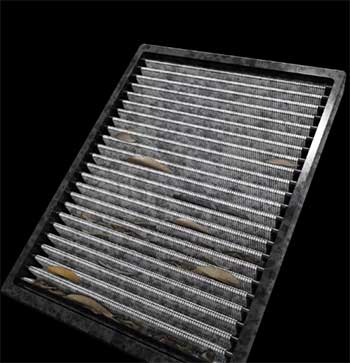
K&N is the go-to for performance enthusiasts, and I get why.
Their oiled cotton gauze filters are washable and reusable, lasting up to 50,000 miles before needing a clean.
I tried a K&N on my old Subaru, and it gave a noticeable growl during acceleration, which was fun.
They’re designed for high airflow, which is great for modified cars, but testing shows they sacrifice some filtration efficiency—often in the mid-90s compared to STP Premium’s 98.3%.
The downside?
You’ll need to clean and re-oil them, which can be a hassle, and over-oiling can gum up your mass airflow sensor.
For everyday drivers like me, the STP Premium is less fuss and better for engine protection.
- WIX Filters
WIX has been around forever, and their filters are a favorite among mechanics for their quality. I’ve used a WIX filter on a friend’s truck, and it’s a solid middle-of-the-road option.
They claim to capture 45% more contaminants than some brands and last 30% longer, which is impressive. Their filtration efficiency is close to the STP Premium, but I found the STP’s micro-pore technology edges it out for finer particles.
WIX filters are pricier, sometimes double the cost of STP, and they’re harder to find in stores. If you want a premium filter without the maintenance of a K&N, STP is a more accessible choice.
- Mann Filters
Mann filters are another high-end option, often used in heavy-duty applications. I’ve seen them in European cars, and they’re built to last with top-notch materials. Mann sometimes includes secondary filter elements for extra protection, which is overkill for most daily drivers like my Civic.
Their filtration is excellent, but the price can be steep—often more than the STP Premium. I also found Mann filters to be less consistent in fitment across different vehicles compared to STP’s precise design.
If you’re driving a high-performance or luxury car, Mann might be worth it, but for most of us, STP delivers similar quality for less.
- EPAuto Budget Filters
For budget-conscious folks, EPAuto filters are tempting. I tried one on my wife’s old Honda Odyssey, and it was a decent replacement for the OEM filter. They’re designed to fit specific models and claim to trap dust, pollen, and soot effectively.
However, the filter media felt more porous than the STP Premium, and I wasn’t confident in its long-term durability. EPAuto is great if you’re pinching pennies, but the STP Premium’s superior filtration and sturdier construction make it a better investment for engine health.
Frequently Asked Questions (FAQ)
Absolutely, the STP Premium is a fantastic air filter. Its micro-pore technology traps 99.9% of particles as small as 0.3 microns, and testing shows a beta ratio of 60, meaning it’s 98.3% efficient at filtering fine dust. I’ve noticed smoother engine performance and better fuel economy since installing it. It’s durable, easy to install, and offers great value for the price. If you want a reliable filter that protects your engine without breaking the bank, this is a solid choice.
STP has been a trusted name in automotive care for over 60 years, and their Premium Air Filter lives up to that reputation. They focus on balancing performance and affordability, which I appreciate as someone who wants quality without spending a fortune. Their filters are rigorously tested, and user feedback, including my own experience, confirms they deliver on filtration and durability. STP’s long history and wide availability make it a brand you can rely on.
STP recommends replacing their Premium Air Filter every 12,000 miles or once a year, which aligns with my experience. In cleaner driving conditions, you might stretch it to 15,000 miles, but if you’re tackling dusty roads like I do, check it every 3,000 miles. Regular inspections ensure it’s not clogged, which keeps your engine running efficiently. I’ve found it holds up well even in tough conditions, making it a dependable choice.
Yes, premium air filters like the STP Premium make a noticeable difference. They offer better filtration—trapping finer particles than basic filters—which protects your engine from wear. I felt a slight boost in acceleration and fuel economy after installing mine, though the gains are modest in stock vehicles. The real benefit is long-term engine health and reduced maintenance costs. Compared to cheaper filters, premium options like STP provide better airflow and durability, making them worth the extra cost.
Why You Should Buy The STP Premium Air Filter?
After months of driving with the STP Premium Air Filter, I’m sold. It’s a small investment that delivers big results—cleaner air, smoother performance, and peace of mind knowing my engine is protected.
Whether you’re a weekend wrench-turner or just want your car to run better, this filter is a no-brainer. It’s affordable, easy to install, and outperforms many competitors. Don’t let dust and debris choke your engine—grab an STP Premium and feel the difference yourself.
Your car deserves it, and so do you.
